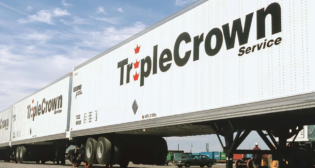
The Cowen Take on Class I 2Q21
Written by Jason Seidl, TD Cowen, Wall Street Contributing EditorAt Cowen and Company, we are adjusting our rail models in advance of second-quarter earnings reports due later this month from the Class I railroads. The models reflect carloads in the quarter, mix, fuel, FX (foreign exchange) and cost implications as the supply chain remains tight.
Acknowledging that the second quarter offers the easiest comparisons, overall carload trends still came in above our expectations as tightness persists. We highlight “Outperform”-rated UNP (Union Pacific) ahead of earnings as well-positioned entering the print.
Tweaking Carloads
Quarter to date, total carloads are up approximately 23% for the U.S. and Canadian carriers, led by Motor Vehicles and Equipment (+128.3%), Coal (+35.4%), and Metallic Ores and Minerals (+30.8%).
With second-quarter 2020 seeing the largest negative impact due to the COVID-19 pandemic, second-quarter 2021 offers easy comparisons; to better gauge trends, we have been looking at carloads compared with 2019 levels. This week (week 25), carloads were down about 2% compared with 2019. This was the second consecutive week carloads have been below 2019 levels; prior to the last two weeks, we saw three consecutive weeks of carload growth over 2019. Unlike the first quarter, there were no material weather impacts for the railroads that affected volumes.
— We expect the intermodal market to be an “outperformer” among the railroads for the remainder of the year. —
On our recent State of the Ports call, a bullish consensus continues on supply chain tightness for the remainder of 2021, with panelists expressing the belief that more freight will find its way back to the intermodal market as congestion subsides. There remains a fight for equipment and space, and big box retailers are not seeing any slow down; they are facing challenges just to find capacity. Intermodal carloads are up 23% quarter to date and 18% year to date. We expect the intermodal market to be an “outperformer” among the railroads for the remainder of the year.
Cost Implications
The overall pricing environment remains strong, and elevated demand has allowed carriers to choose their business. Increased volumes have come with a noticeable decline in rail service, according to our industry contacts. We have heard that inland ramps are employing embargoes—not having the capability to take in more cargo. While we expect contracts to be priced favorably, we anticipate costs associated with increased dwell times and demurrage charges.
Similar to the first quarter, fuel surcharge has been a headwind as diesel prices continue to rise and lag contract by approximately two months. Also, recall in second-quarter 2020, diesel prices declined considerably, which will be comped this quarter off increased sequential prices. As expected for our Canadian railroads, FX will be a notable headwind, off tough comps following last year’s FX tailwind.
We adjust our models to reflect top- and bottom-line implications in the quarter, while modestly adjusting out 2022 estimates for CP (Canadian Pacific) and UNP. Note that our new CSX estimates and price target are a reflection of the company’s 3:1 stock split. Our price targets are based off our 2022 EPS estimates, apart from CP (driven by 2023 EPS estimates) and KSU (Kansas City Southern; $300 price target on hold as we await decisions from the Surface Transportation Board on its proposed merger and voting trust agreement with CN; see my recent column, “CN/KCS Voting Trust Approval Better Than Even.”). We maintain “Outperform” on CP, KSU, NSC (Norfolk Southern), and UNP, and “Market Perform” on CNI (CN) and CSX.



